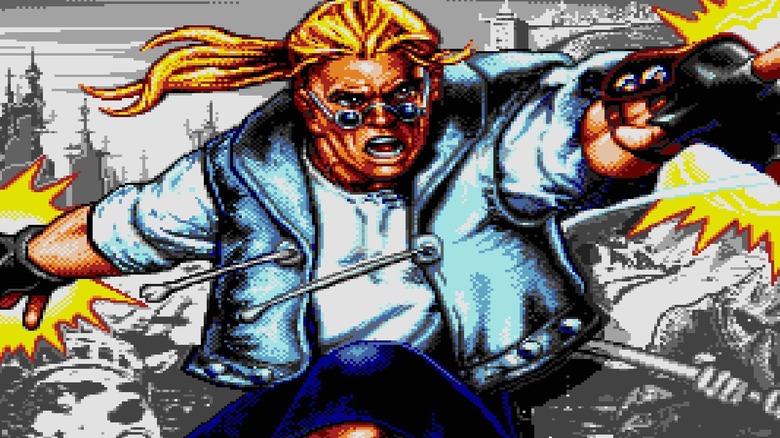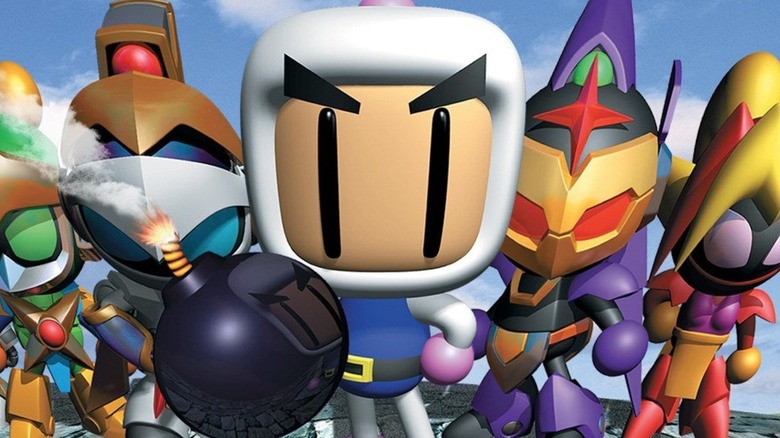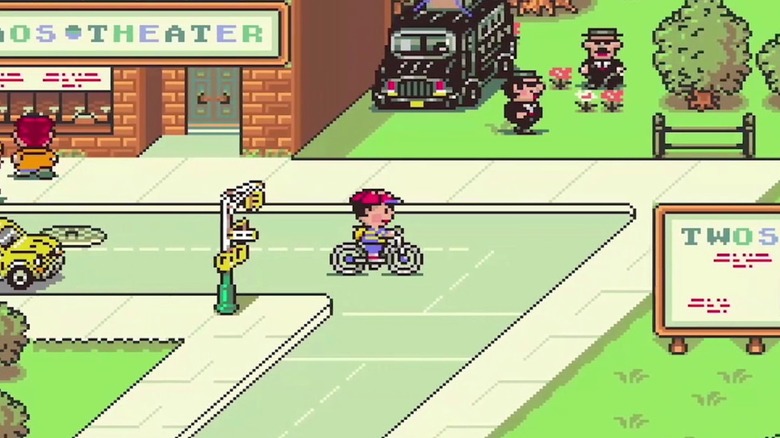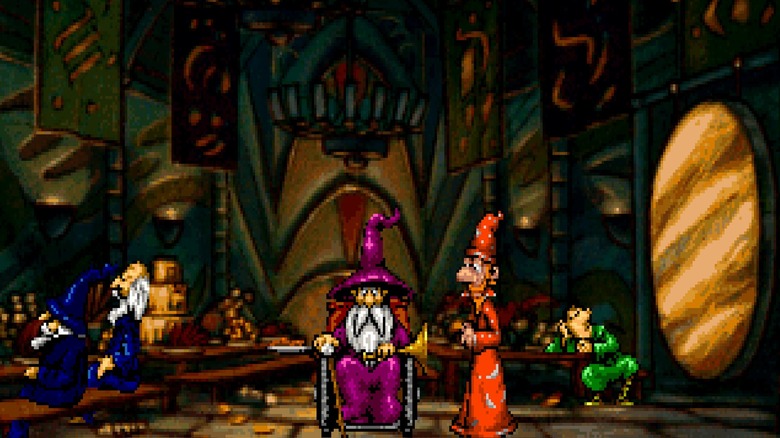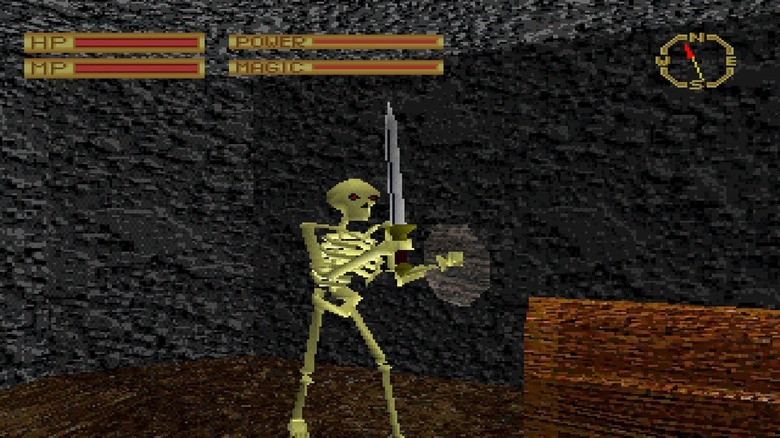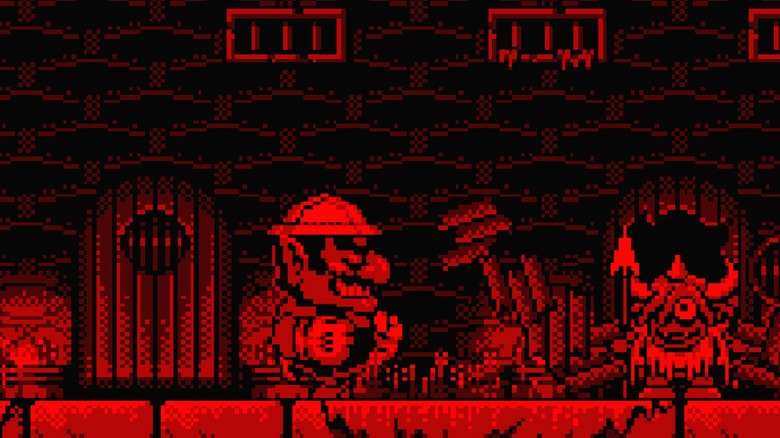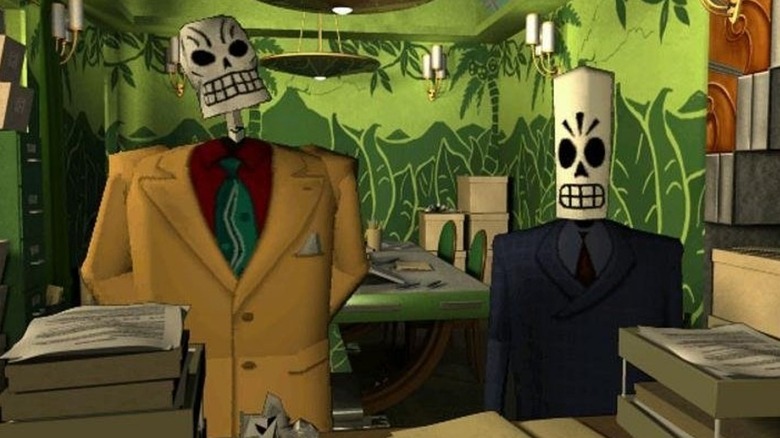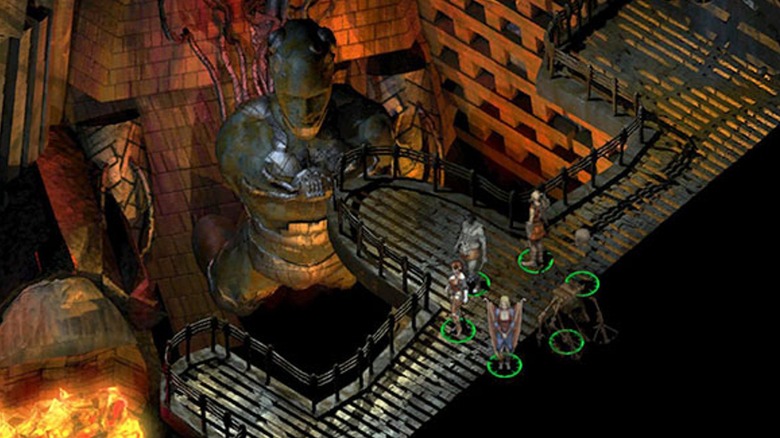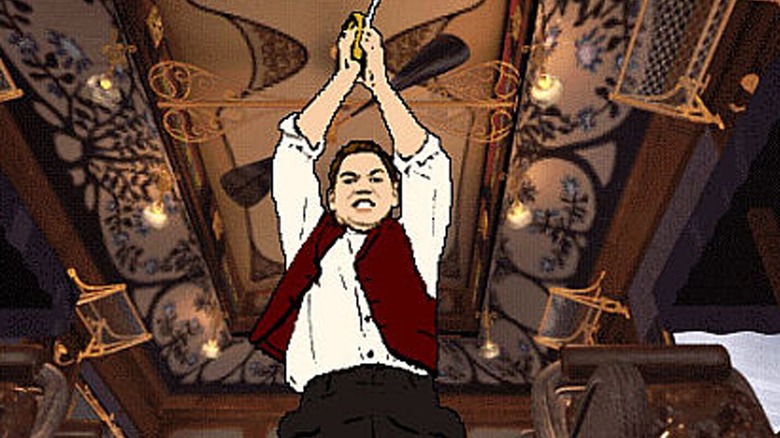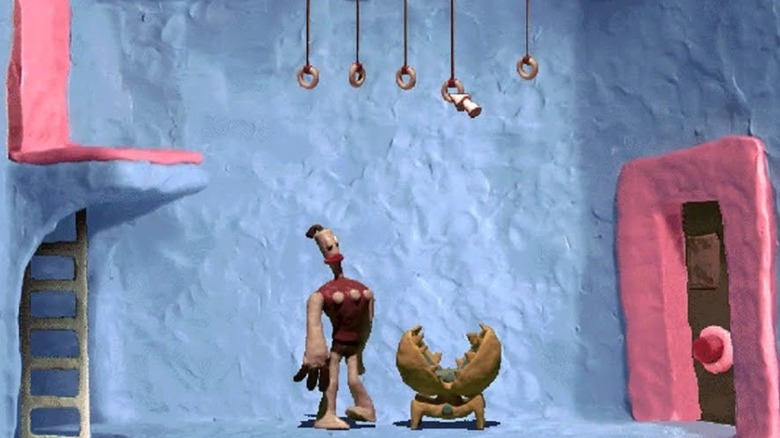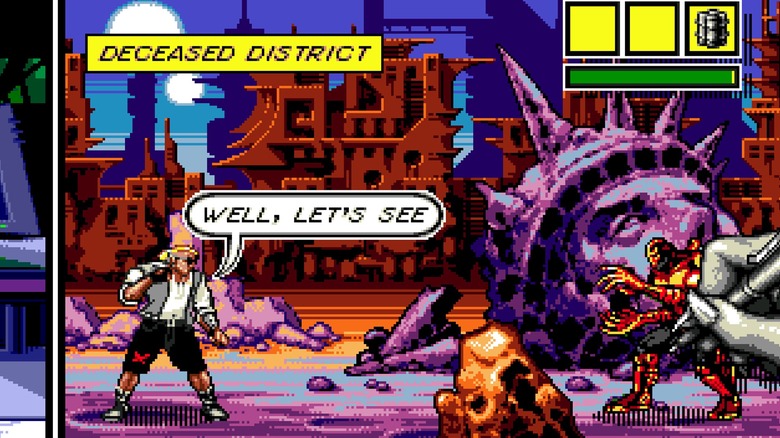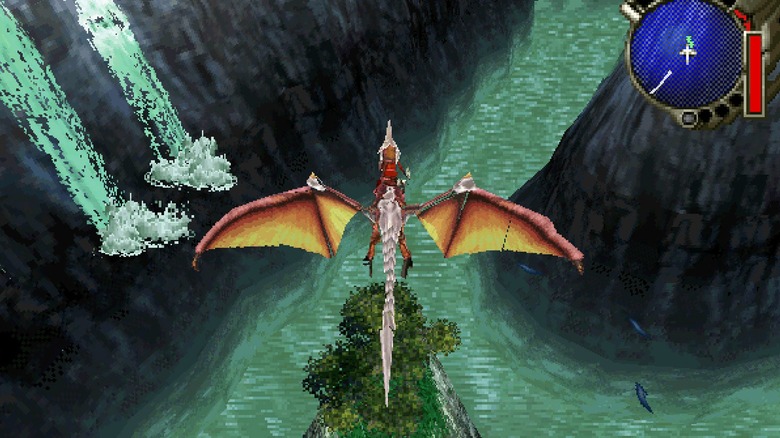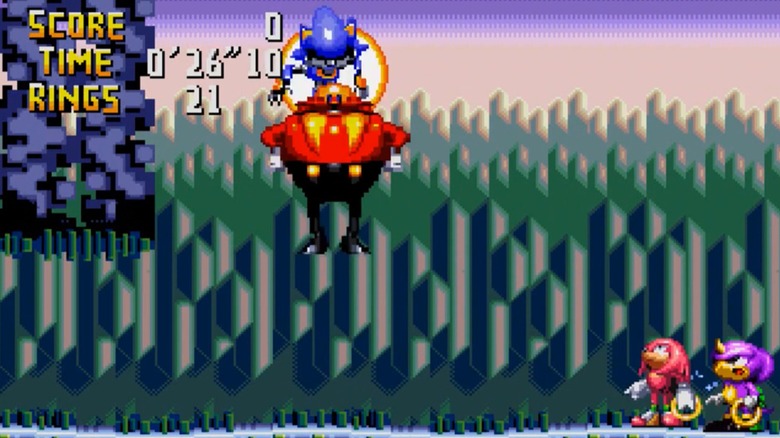'90s Video Game Flops That Are Actually Worth Playing
'90s nostalgia is all the rage, but even if you remove your rose-tinted glasses, the decade still looks like a magical time for video games. The 1990s gave us the Sega Saturn, the PlayStation, and the Nintendo 64. It gave us groundbreaking computer games like "Myst" and all-time best-sellers like "Final Fantasy 7." It also gave us plenty of games that fell flat on their face.
Making a video game is all about artistic drive and creative ingenuity, but more often than not, making a successful video game is all about luck. Bad marketing or poor timing can cause a great game to never find the fanbase it truly deserves. Other times, critics can make a bad call that doesn't get corrected until years or decades later. That's how we get cult classics — and why there are so many games with disappointing Metacritic scores that are actually awesome.
Understanding the biggest games of today means looking back at history, and it's not just the hits that matter. Some of the biggest flops of the '90s are still worth playing, and a few of them might even be better than those that came after.
Bomberman 64
Bomberman used to be a bonafide video game celebrity. He was the star of dozens of games throughout the '90s, but the past decade has been a little rough on the poor guy. Now long past his heyday, Bomberman has only appeared in 2 games since 2010: "Super Bomberman R" and the mobile title "Amazing Bomberman."
Luckily the old games aren't going anywhere, and with the current lapse in Bomberman titles, there's plenty of time to go back and reevaluate some of his classic games. For our purposes here, "Bomberman 64" deserves some special recognition. It was the game that first brought Bomberman into the third dimension, and it took more than a handful of tips from the success of "Super Mario 64."
Back in the '90s, unlike "Mario 64," the world wasn't all that impressed with "Bomberman 64." The series was still trying to find its footing in 3D, and reviewers were quick to point out that the multiplayer mode — which had been a highlight for so many previous entries — was seriously lacking in this outing. The single-player mode, however, is excellent, and that's a big part of why "Bomberman 64" is still worth checking out today. It might not be as easy to get your friends together for a game night as it was in 1997, but you can still sit in the nostalgia yourself and play through the game's absolutely charming story.
EarthBound
If you've ever played Nintendo's delightful RPG "EarthBound," chances are good you didn't play it in the '90s. "EarthBound" was localized for the US from the Japanese game "Mother 2," and in 1995 a vast majority of gamers didn't even take the opportunity to bounce off the game. Nintendo sold less than 150,000 copies of "EarthBound," but today it's considered one of the greatest RPGs of its generation.
Unlike other RPGs of the time, "EarthBound" is more-or-less set in the real world, but it somehow manages to get wilder than any of the Super Nintendo's other games. The story is set in a small town in Eagleland in the year "199X." When a meteorite crashes near the town, childhood friends Ness and Pokey go to check it out and inadvertently find themselves fighting for the fate of the world. Their adventure will introduce them to talking bee creatures, raving cultists, a slew of zombies, and so much more.
"EarthBound" really goes for it, and every utterly surprising encounter will leave you smiling. The game is also surprisingly emotional and has quite a bit to say under the goofy surface. That odd tone probably didn't do it many favors when it debuted in the US, but it makes it more than worth a playthrough today.
Discworld
Terry Pratchett is one of the most prolific and beloved British fantasy writers of all time. He wrote dozens of books, but many of his most popular stories were set on the fantasy land known as the Discworld. All 41 of Pratchett's Discworld novels are filled with magic and wonder, and plenty of them have been adapted into other media — including, of course, video games.
In 1995, PC gamers got their first taste of an interactive version of Pratchett's fantastical realm in "Discworld." In Europe, where Pratchett had a more readily-established reputation, the game sold just as well as his books. In the US, it never made much of an impact. That's a shame, but it's something that modern day gamers can rectify by heading back into "Discworld" today. The game is a fantastic and faithful adaptation of Pratchett's work, capturing all the satire and slapstick comedy that fills his books while also introducing gamers to genuinely intriguing magical locations and characters. If modern day fantasy epics are starting to feel a little old hat, "Discworld" is the perfect way to spice up your next gaming session.
King's Field
"King's Field" is a hugely influential game that millions of modern day gamers have never played. It was the first title to come out of a little developer called FromSoftware, and without it, we wouldn't have games like "Dark Souls" and "Elden Ring" keeping us enthralled and frustrated today. As a first-person dungeon crawler, "King's Field" doesn't look much like FromSoftware's modern games, but some of the developer's core tenets were already being established with its first game. Upon release, reviews of the game were very mixed, with plenty of reviewers complaining about the game's overwhelming difficulty. Sound familiar?
Unfortunately, those shaky reviews were enough to stop the game from reaching a wider audience in 1994. "King's Field" sold well enough in Japan that FromSoftware got to make a few sequels, but the original game was never released internationally. Despite its flaws, "King's Field" is absolutely worth finding and playing today (even if there's no official English release). Any fan of FromSoftware's work is going to appreciate this look back in history, and they'll notice that not as much has changed from 1995 as they might have thought.
Virtual Boy Wario Land
Most games flop because of bad reviews, poor marketing, or unlucky timing. Some games are doomed to fail from the very moment they're conceived. "Virtual Boy Wario Land" is one of those games, and its name contains a pretty big hint about why it failed. Released in 1995, the Virtual Boy was NIntendo's most ambitious console of the '90s — and its biggest failure. Nintendo dreamed of bringing virtual reality gaming to the forefront, but the tech just wasn't there, and gamers didn't get on board. For the one year that the Virtual Boy was supported by Nintendo, it sold fewer than 800,000 units globally.
Because of the Virtual Boy's spectacular failure, "Virtual Boy Wario Land" was never going to be a massive success. That's too bad, because Wario's VR adventure was actually a great game that used the Virtual Boy's tech to its advantage. Wario could jump between the background and foreground of levels to smash enemies, solve puzzles, and discover secrets in ways that were exciting and new for the time, and it's earned its admirers because of it.
If only the entire game hadn't been rendered in the awful black-and-red coloring of all Virtual Boy games, it potentially could have made a bigger impact. There are still some fans hoping to get a remastered version in full color, but the odds aren't great. Finding a Virtual Boy in the 2020s is going to be a struggle, but if you can pull it off, make sure to slot "Wario Land" into your gaming schedule.
Grim Fandango
"Grim Fandango" is one of those cult classics that really makes you wonder how it could have possibly flopped on its initial release. The game follows Manny Calavera, a skeletal travel agent working at the Department of Death in El Marrow, one of the afterlife's main cities. Manny's a bit down on his luck, but when he tries to turn his business around and find better clients, he ends up discovering a massive conspiracy that takes him on a tour of the underworld.
From stellar art to memorable vocal performances, "Grim Fandango" really has everything that you want in an adventure game, and that may have been the problem. LucasArts released the game in 1998, and at that time, these kind of classic adventure games were really on their way out. In fact, some point to the failure of "Grim Fandango" as marking the end of the genre's competitive place in the video game market.
Luckily we don't have to abide by the mistakes of the past. Gamers in the late '90s may have passed over "Grim Fandango" for more exciting, fast-paced games, but today everyone can slow down and appreciate the incredible artistry on display in one of the greatest adventure games ever made. The remastered version is well worth your time.
Planescape: Torment
It's true that "Planescape: Torment" is easily one of the best RPGs ever made, but everything that makes the game so phenomenal also doomed it to flop. Released at the end of 1999, "Planescape" used the same engine as the massively popular "Baldur's Gate," and it even adapted a different "Dungeons & Dragons" campaign setting.
Unfortunately, the Planescape setting isn't nearly as renowned as the Forgotten Realms, and it's much weirder by several degrees. Planescape is a collection of outer planes that is populated by talking skulls, rat hiveminds, and goddesses of pain. The dark and spooky setting undoubtedly turned away some gamers, and the 800,000 word script likely intimidated many more beginners.
"Planescape" is an absolutely massive game, but the majority of its great moments are text-based. Playing through the game is the equivalent of reading several fantasy novels, but it might be even more rewarding than that. The immortal, amnesiac player character is beyond intriguing, and his cast of followers are some of the most compelling video game characters you'll ever meet. "Planescape: Torment" didn't sell enough copies to save publisher Interplay from serious financial woes, but it might be the '90s flop that's most worth installing today.
The Last Express
"The Last Express" is another solid adventure game from the late '90s. Like "Grim Fandango," the game debuted at a time when the genre as a whole wasn't in high demand, but "The Last Express" had a few other factors working against it. For one thing, the game is a historical drama set on the Orient Express in 1914, just as World War I is about to break out. For another, the game's publisher, Brøderbund, had its entire marketing department quit just before "The Last Express" was set to release.
With a premise that only directly appealed to history buffs and basically no marketing campaign whatsoever, there was no real hope that "The Last Express" could become a financial success. That's too bad, because "The Last Express" was wildly ahead of its time.
The entire game is a series of mysteries, and players spend as much of their time figuring out the backstory of protagonist Robert Cath as they do progressing the game's plot. As players move about the train, they can eavesdrop on conversations or talk to any of the train's passengers. As the train continues its journey, characters move about and their stories shift, and the game lets players rewind time to play out different options or experience new conversations. That unique approach, combined with striking rotoscoped visuals, makes "The Last Express" an unforgettable experience.
The Neverhood
"The Neverhood" is one of the most visually unique games to come out of the '90s. Released in 1996, the entire game is animated with claymation, which makes it look a lot more like a playable movie than most other games of the time. There was one major problem with the animation style, though: Stop motion animation can get expensive. "The Neverhood" took three years and millions of dollars to create, but in its first nine months on the market, it only sold 37,000 copies.
Financially, "The Neverhood" was a spectacular failure, but the game itself is actually pretty amazing. Even by today's standards, the game stands out visually, but it's more than just eye candy. Players follow Klaymen as he wakes up in a nearly abandoned Neverhood with no idea of what happened to the area's inhabitants. Piecing together the story involves plenty of environmental puzzle solving, which neatly sidesteps the usual item gathering and inventory scrolling that plagues other adventure games. As we've learned, the late '90s weren't a great time for adventure games, and with its high budget, "The Neverhood" really needed to sell more than it did. Still, it's a little '90s oddity that is more than worth the time it takes to explore.
Comix Zone
"Comix Zone" is a powerful example of how games can tie their presentation to their stories. The game follows comic artist and rock n' roll enthusiast Sketch Turner as he's sucked into the pages of his own creation. It plays like a side-scrolling beat 'em up, but players get to move between comic book panels, encountering dialogue bubbles and solving occasional puzzles by carefully examining the background art of Sketch's pages. "Comix Zone" is arguably the most visually arresting game ever released on the Sega Genesis, and clearly Sega knew that prior to the game's release, having filed a patent for its "videogame system for creating a simulated comic book game."
Critics were wowed by the visuals of "Comix Zone," but most agreed that the developers should have spent more time focusing on the actual gameplay elements of the experience. The game took some hits for having clunky controls, limited fights, high difficulty. The game's middling critical performance might have been enough to keep gamers away in 1995 when the game was full price and released late in the Genesis' life cycle. Since it's much more easily available today (you can buy it on Steam), it's well worth exploring.
Panzer Dragoon Saga
More than any other game on this list, "Panzer Dragoon Saga" is a tragic case. It's one of the greatest games that no one ever got the chance to play, and it never even had a fair shot at succeeding. "Saga" was released for the Sega Saturn in 1998, which some gamers might remember wasn't a great time for the game publisher.
Sega's disc-based console failed to compete against the PlayStation and Nintendo 64, and the company already had big plans for the Dreamcast. "Panzer Dragoon Saga" flopped on its initial Japan release, so Sega only printed 20,000 copies of the game to sell in North America. Even after those sold out, the company was reluctant to print more.
The story follows a boy named Edge and a magical, semi-mechanical dragon that saves his life. Together, Edge and his dragon chases down a villain named Craymen who had all of Edge's friends killed, but as their journey progresses, Edge somewhat loses his taste for revenge and his commitment to his own country. It's an emotional tale about moral gray areas, and which is just part of what makes the game utterly unlike any other RPG of the time. Rather than focus on a large party, Edge and his dragon are the only playable characters, and the combat is much more fluid and dynamic that the typical turned-based approach of other RPGs. "Panzer Dragoon Saga" is really a game that needs to be experienced to be fully understood and appreciated, but sadly few people did.
Knuckles Chaotix
Though most gamers didn't know it at the time, 1995's "Knuckles' Chaotix" was actually based on the remnants of a canceled Sega game called "Sonic Crackers." The game sidelined Sonic in favor of his red-colored counterpart, but that wasn't its biggest innovation. "Knuckles' Chaotix" really ramped up the physics-based gameplay of previous games by featuring two characters — which could both be played by different people — linked together by a rubber band. Mastering the art of bouncing off each other and using the tension of the band properly added a whole new layer to the classic "Sonic" gameplay loop.
That innovation didn't prove to be enough to save the game from its flaws, sadly. Critics were quick to point out that many of the game's other features were severely lacking. Level design was relatively simplistic, with some sections being essentially copy/pasted between areas, and there are entire sections where the developers seemingly forgot to add enemies for Knuckles to encounter.
The biggest nail in the coffin for "Chaotix" wasn't its own flaws, though. The game was released on Sega's 32X system, an add-on for the Genesis that also flopped. No matter how many inventive new mechanics developers add to a game, releasing it on a failed system is a recipe for disaster. That small tragedy aside, "Sonic" fans of the 2020s should absolutely make time to check Knuckles' rubber band antics.

